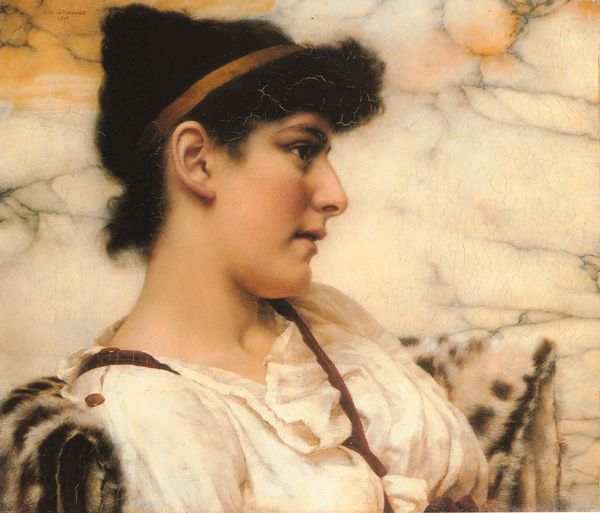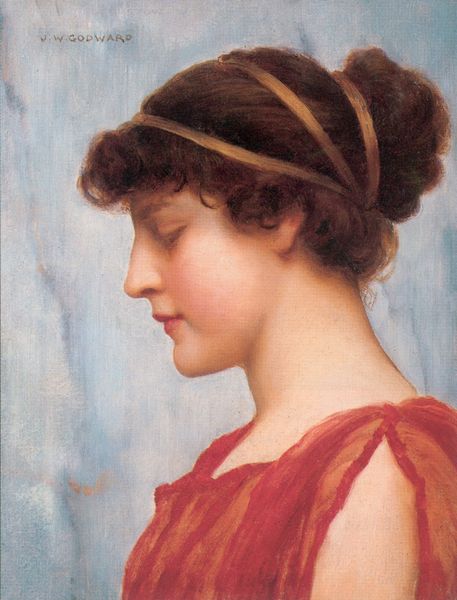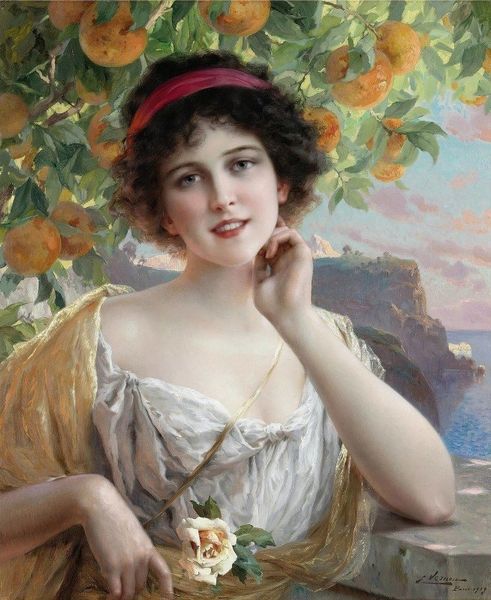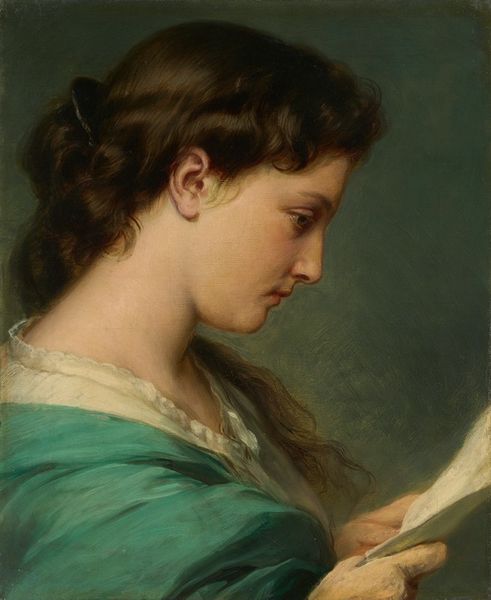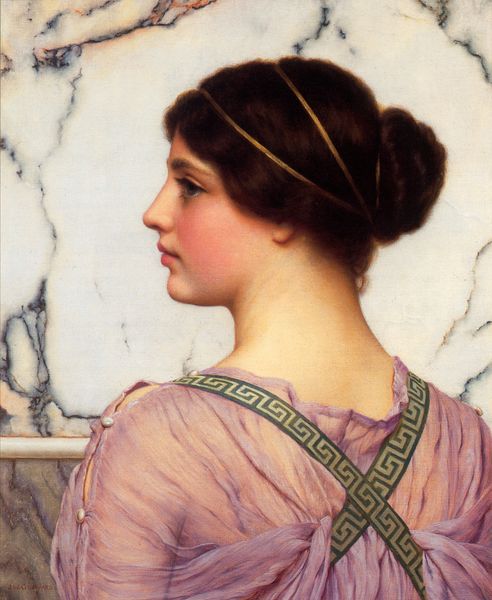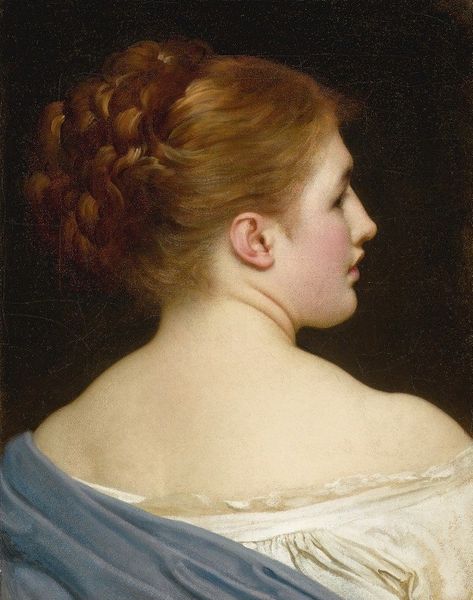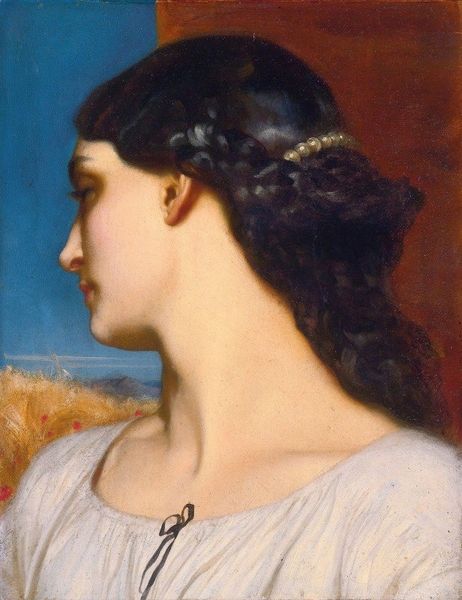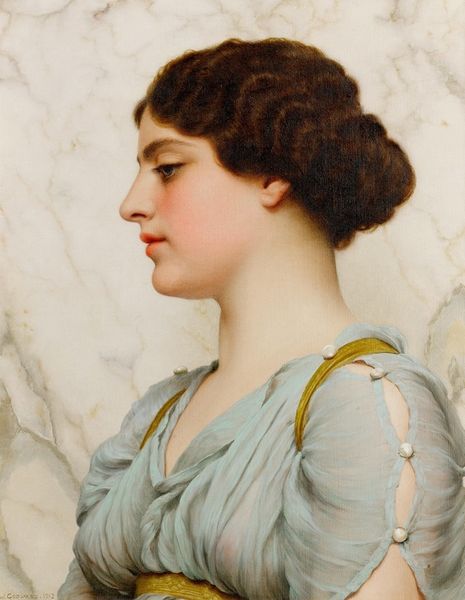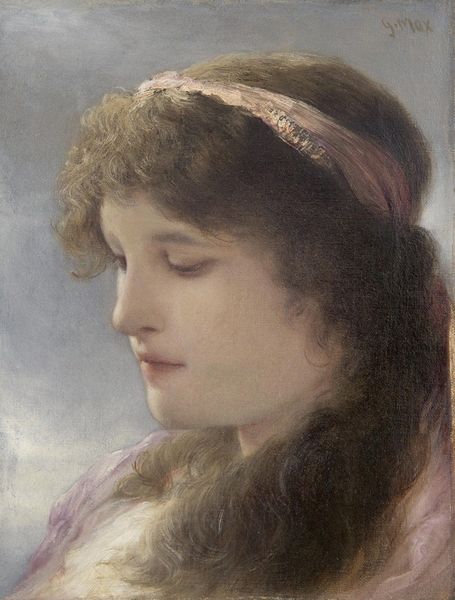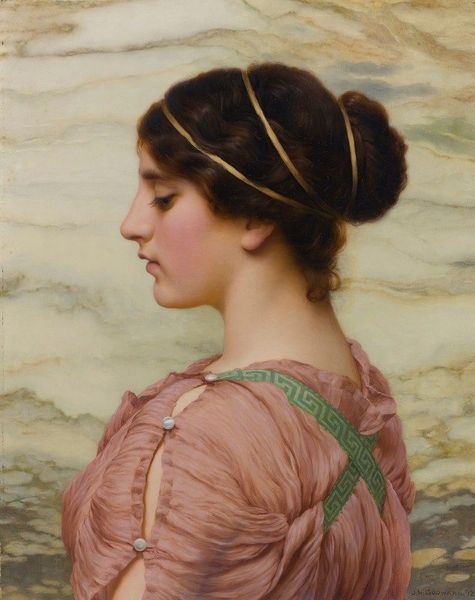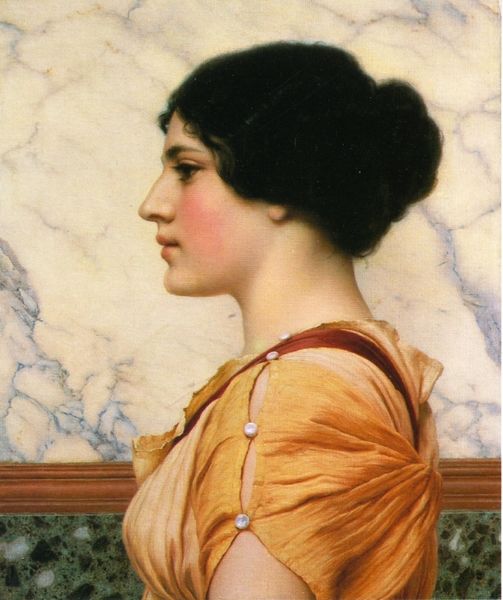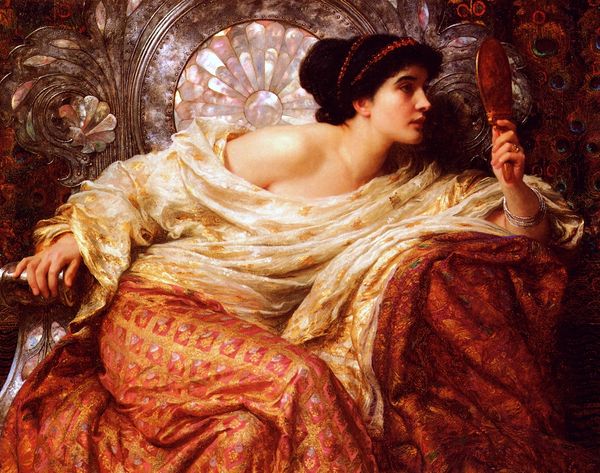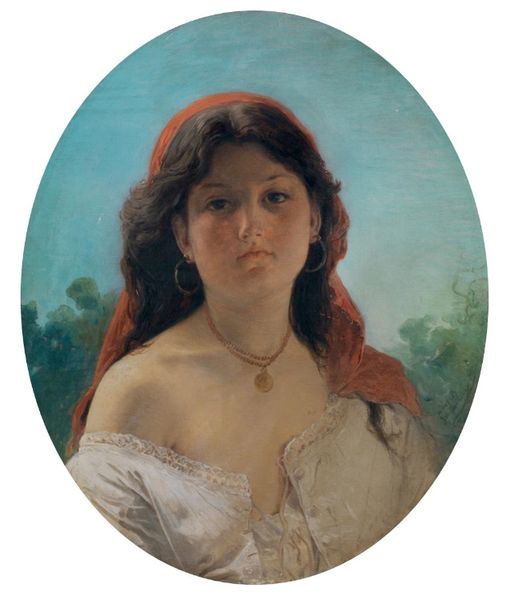
Copyright: Public domain
Editor: This is “The Bird Charmer” by Léon Bazile Perrault, painted in 1873 using oil paint. It’s a captivating piece; the way the woman is posed, it almost feels like a moment frozen in time. How do you interpret this work? Curator: This painting invites us to consider the idealized depictions of women that were common in 19th-century Academic art, and also to consider the way in which gender intersects with our relationship with nature. The woman here isn't presented as an active agent, but rather as an object of beauty, closely aligned with the natural world – a bird is literally perched on her shoulder. But consider: is she empowered or imprisoned by this association? Editor: That's interesting, I hadn't thought of it that way. I initially just saw a pretty picture, but now I'm wondering if the bird is a symbol, maybe of her own limited freedom? Curator: Precisely. Consider the period - women's roles were extremely limited by societal expectations. Could the bird be a representation of the woman's own spirit, yearning for something beyond her prescribed domestic role? Editor: So you see it as a commentary on the constrained roles of women in that era? Curator: I think it subtly critiques that constraint while operating within the artistic conventions of its time. The softness, the romanticism - it's palatable, but perhaps also provocative, if we examine it through a feminist lens. It reflects the complexities of female representation. Editor: That gives me so much to think about. I went from seeing a pretty picture to recognizing layers of meaning tied to social issues. Thanks! Curator: Absolutely. Art from the past allows us to view and analyze history through different lenses. Examining art helps to expand our knowledge and perspective on a more equitable world.
Comments
No comments
Be the first to comment and join the conversation on the ultimate creative platform.
